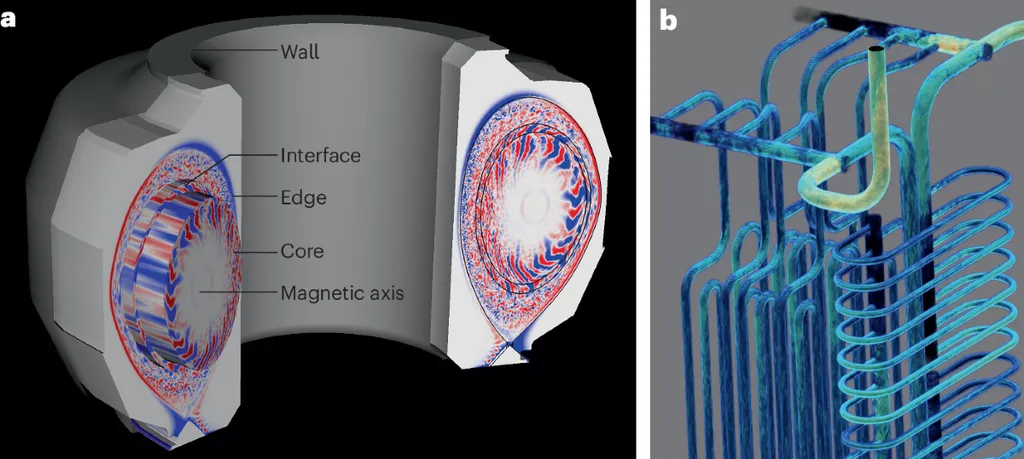Researchers from the University of Michigan, including Jack B. Coughlin, Archis Joglekar, Jonathan Brodrick, and Alexander Lavin, have developed a novel approach to simulating nuclear fusion processes. Their work, published in the Journal of Computational Physics, focuses on creating a flexible and efficient computational tool for modeling the complex physics involved in nuclear fusion.
The team’s research centers around a heterogeneous multiphysics solver, which is a computational tool designed to handle the multiple interacting physical phenomena that occur during nuclear fusion. Specifically, they have developed a solver for a type of fusion experiment known as a compressing Z Pinch. This process involves using a powerful electrical pulse to compress and heat a plasma, potentially initiating nuclear fusion reactions.
One of the key challenges in simulating such processes is the need to solve a set of ordinary differential equations (ODEs) that describe the evolution of the system over time. The researchers have employed an auto-differentiable ODE solver, which can automatically compute the derivatives needed for the simulation. This is particularly useful for optimizing the performance of the fusion reactor and understanding the underlying physics.
However, incorporating existing, non-differentiable plasma solvers into this gradient-based workflow is not straightforward. To address this, the researchers developed the “Tesseract” software. This tool provides a differentiable abstraction layer that is fully compatible with JAX, a popular programming library for machine learning and scientific computing. Tesseract allows for seamless interchange between high-fidelity solvers, neural surrogates, and analytical approximations, enabling rapid and progressive prototyping.
The practical applications of this research for the energy sector are significant. By providing a more accurate and efficient way to model nuclear fusion processes, this work could accelerate the development of fusion power plants. Fusion has the potential to provide a nearly limitless, clean source of energy, and advancements in computational modeling are crucial for making this technology a reality.
In summary, the researchers have developed a sophisticated computational tool that can handle the complex physics of nuclear fusion. Their work demonstrates the potential of using differentiable programming and machine learning techniques to advance the field of nuclear fusion and bring us closer to a future powered by clean, abundant energy. The research was published in the Journal of Computational Physics, a leading journal in the field of computational physics.
This article is based on research available at arXiv.

